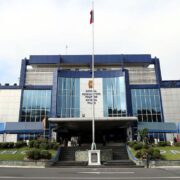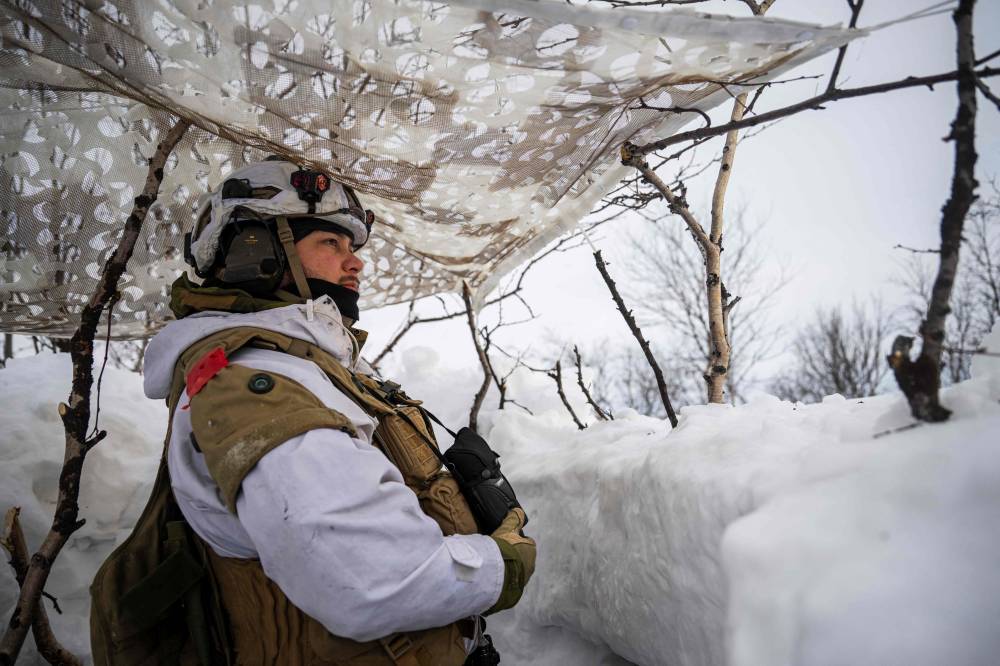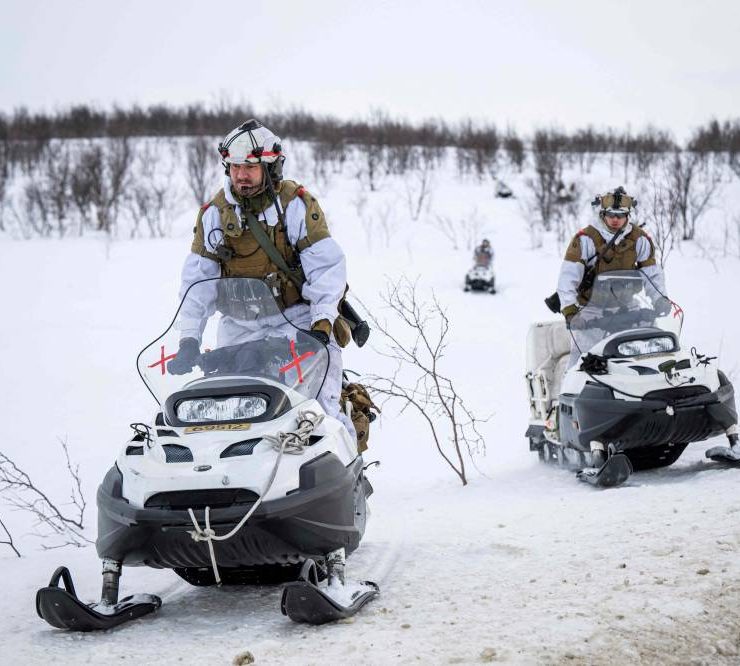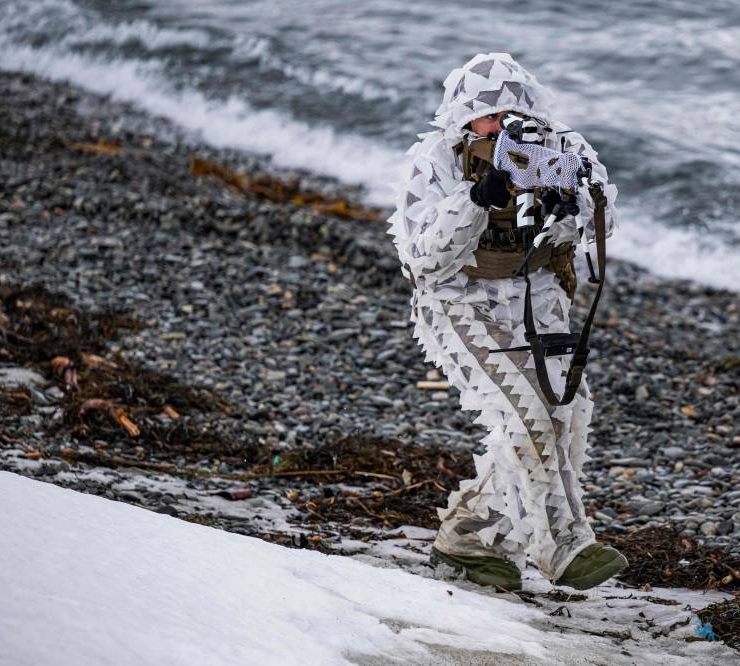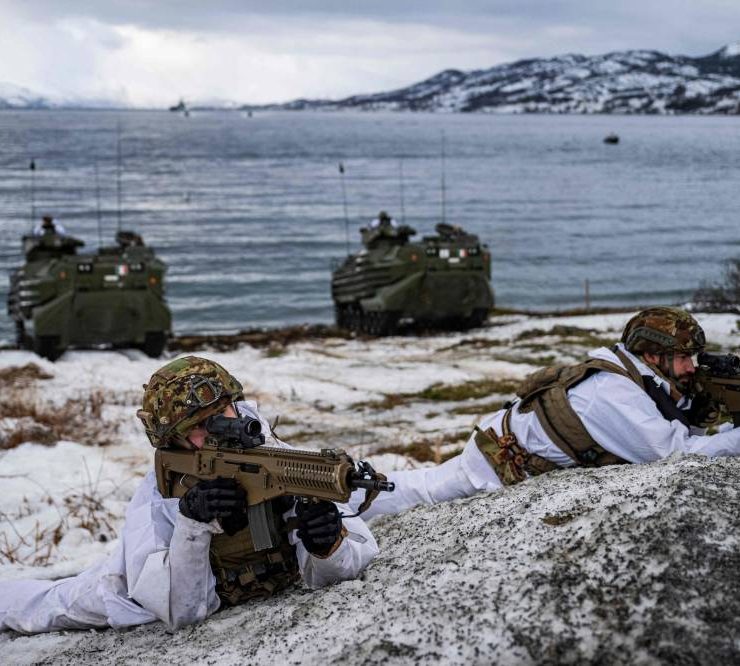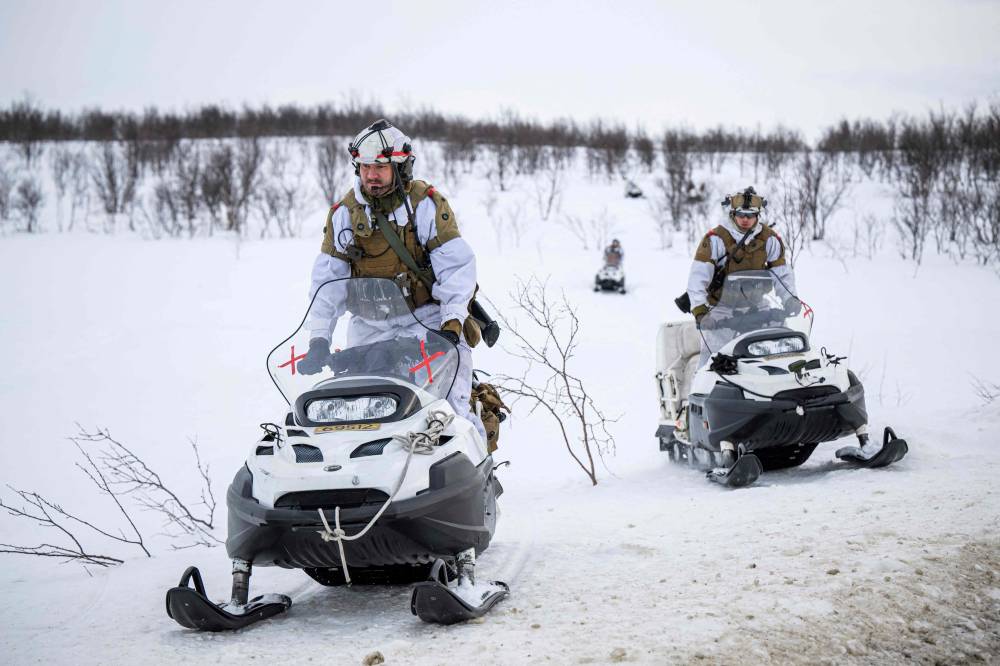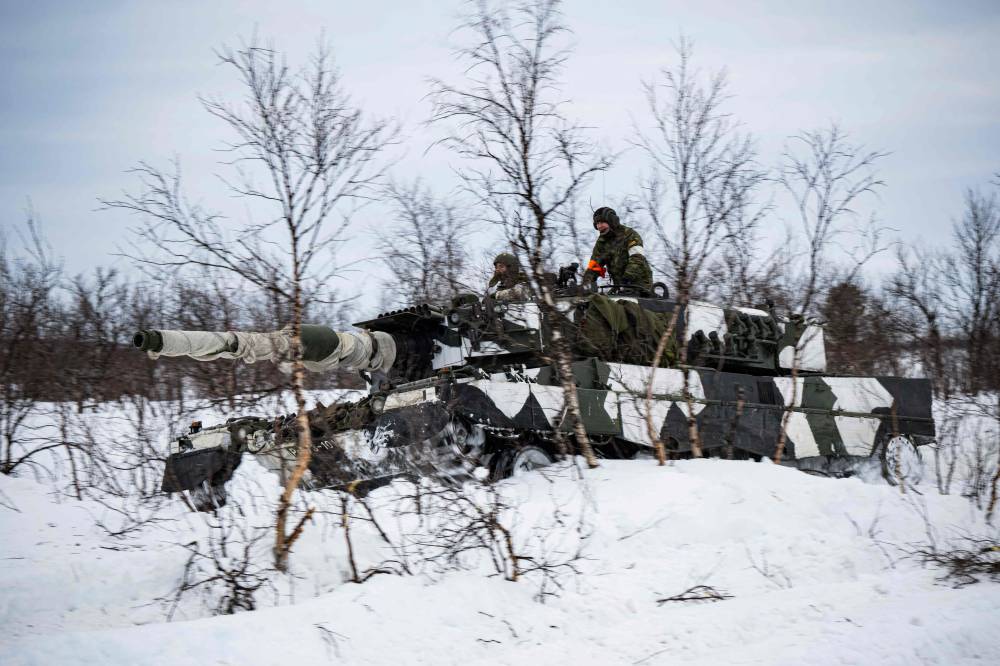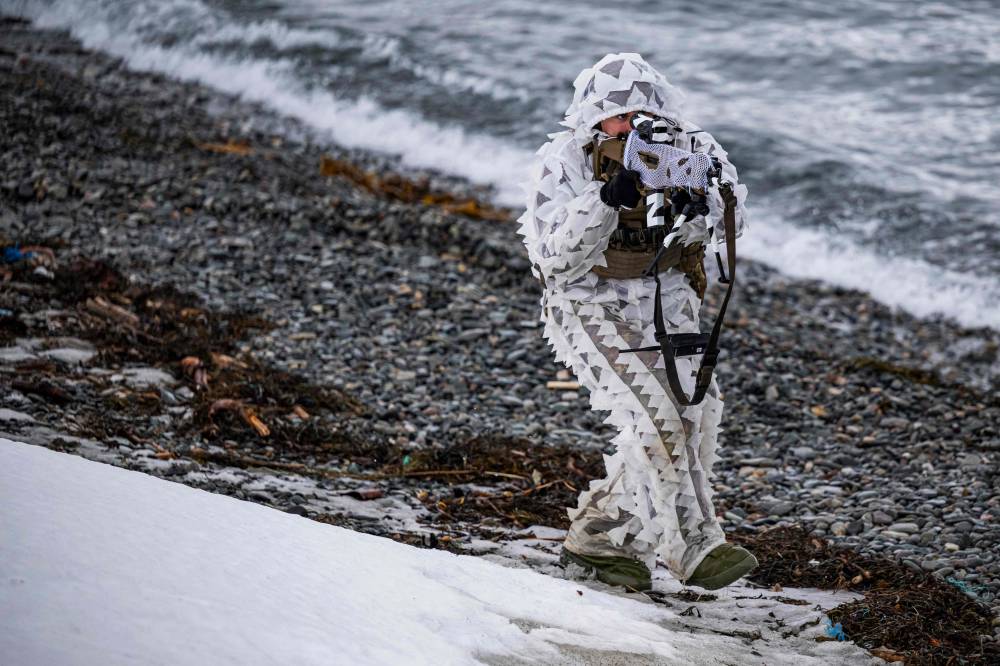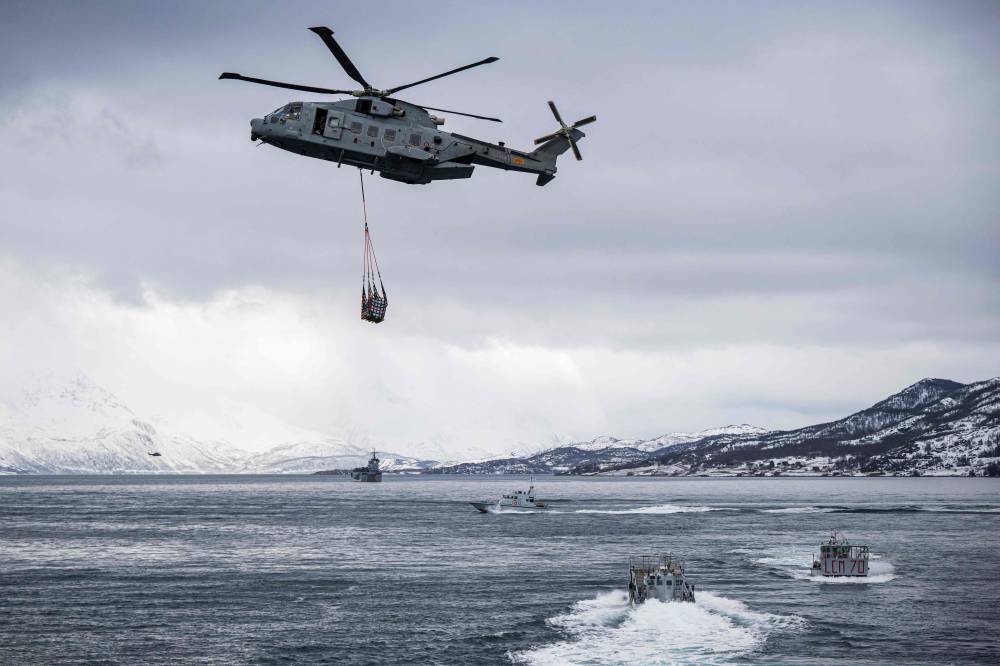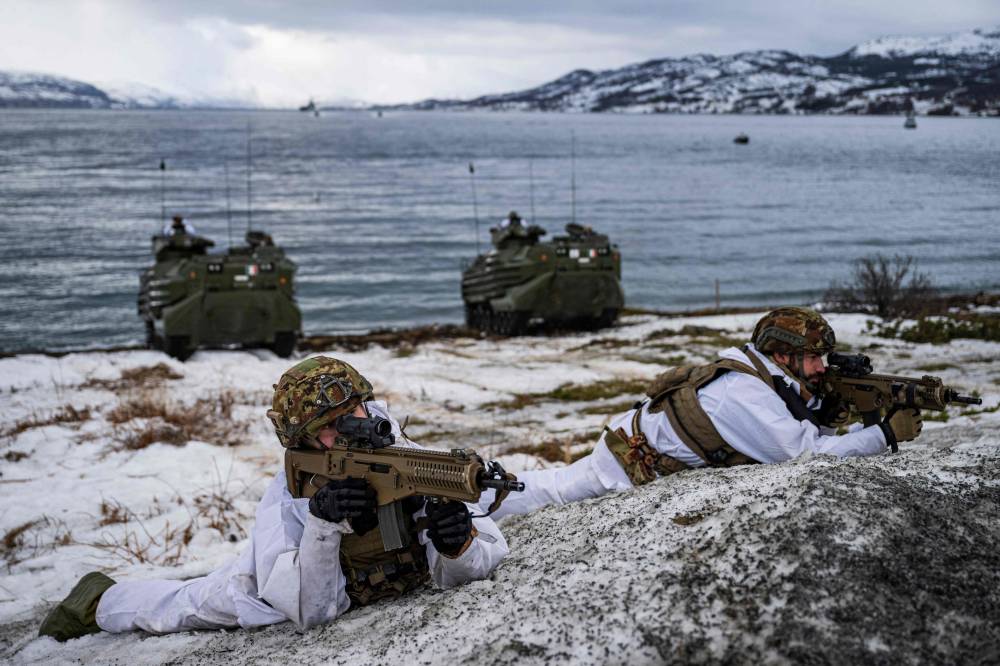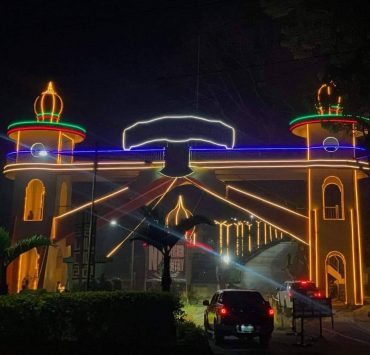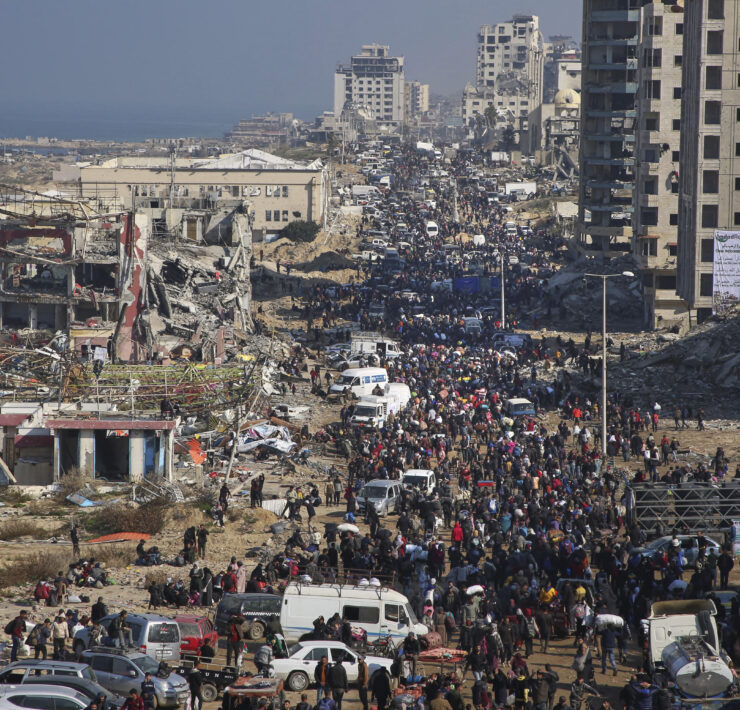Nato prepares for Russian threat in harsh Arctic
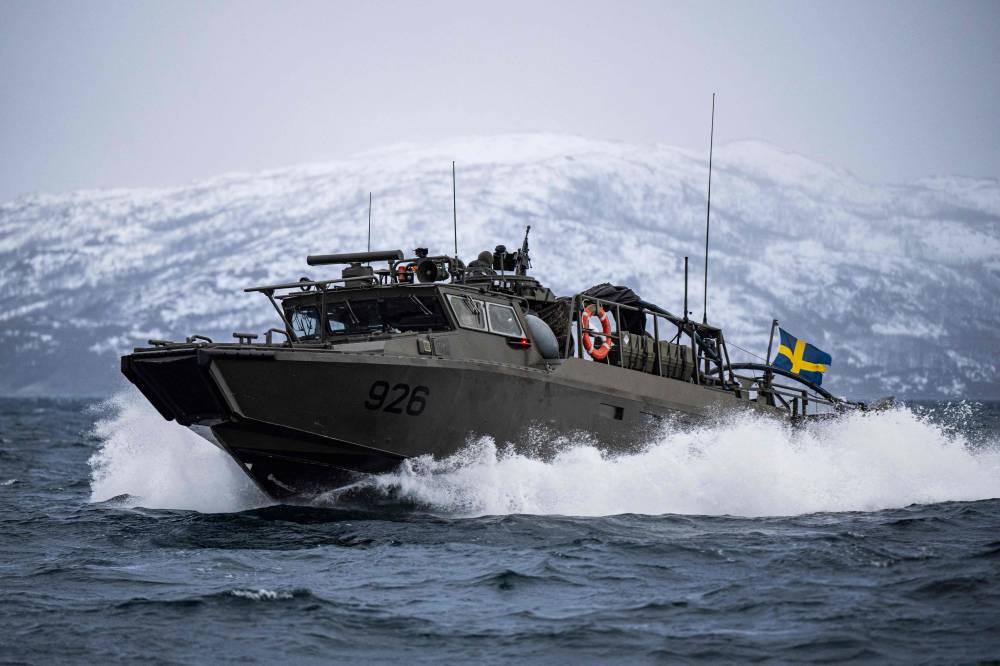
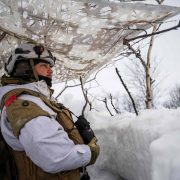
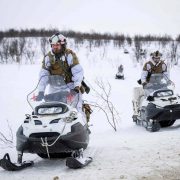
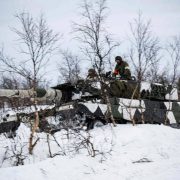
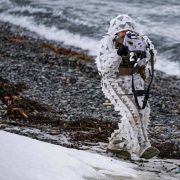 +2
+2 Nato prepares for Russian threat in harsh Arctic
A Norwegian Home Guard soldier of the 17th District Company 'Ida and Lyra', part of the rapid mobilisation force within the Norwegian armed forces, stands in a snow trench as he participates in the Nordic Response 24 military exercise on March 8, 2024, in Alta, above the Arctic Circle in Norway. Nordic Response 24 is part of the larger NATO exercise Steadfast Defender. The exercise involves air, sea, and land forces, with over 100 fighter jets, 50 ships, and over 20,000 troops practicing defensive manoeuvres in cold and harsh weather conditions. (Photo by Jonathan NACKSTRAND / AFP)
Nato prepares for Russian threat in harsh Arctic
Norwegian Home Guard soldiers of the 17th District Company 'Ida and Lyra', part of the rapid mobilisation force within the Norwegian armed forces, ride snow scooters as they participate in the Nordic Response 24 military exercise on March 8, 2024, in Alta, above the Arctic Circle in Norway. Nordic Response 24 is part of the larger NATO exercise Steadfast Defender. The exercise involves air, sea, and land forces, with over 100 fighter jets, 50 ships, and over 20,000 troops practicing defensive manoeuvres in cold and harsh weather conditions. (Photo by Jonathan NACKSTRAND / AFP)
Nato prepares for Russian threat in harsh Arctic
TOPSHOT - Finnish soldiers of the Finnish-Swedish Division ride the Leopard 2A6, a third generation German main battle tank, during a demonstration of border crossing by Swedish and Finnish troops as part of the NATO Nordic Response 24 military exercise on March 9, 2024 on the Norwegian side of the Kivilompolo border crossing between Finland and Norway, located above the Arctic Circle. Nordic Response 24 is part of the larger NATO exercise Steadfast Defender. The exercise involves air, sea, and land forces, with over 100 fighter jets, 50 ships, and over 20,000 troops practicing defensive manoeuvres in cold and harsh weather conditions. (Photo by Jonathan NACKSTRAND / AFP)
Nato prepares for Russian threat in harsh Arctic
TOPSHOT - Marines in action during an amphibious assault demonstration, part of the Nordic Response 24 military exercise on March 10, 2024, at sea near Sorstraumen, above the Arctic Circle in Norway. Nordic Response 24 is part of the larger NATO exercise Steadfast Defender. The exercise involves air, sea, and land forces, with over 100 fighter jets, 50 ships, and over 20,000 troops practicing defensive manoeuvres in cold and harsh weather conditions. (Photo by Jonathan NACKSTRAND / AFP)
Nato prepares for Russian threat in harsh Arctic
TOPSHOT - An amphibious assault demonstration with joint forces of the Swedish, Finnish, Italian and French army is pictured during the Nordic Response 24 military exercise on March 10, 2024, at sea near Sorstraumen, above the Arctic Circle in Norway. Nordic Response 24 is part of the larger NATO exercise Steadfast Defender. The exercise involves air, sea, and land forces, with over 100 fighter jets, 50 ships, and over 20,000 troops practicing defensive manoeuvres in cold and harsh weather conditions. (Photo by Jonathan NACKSTRAND / AFP)
Nato prepares for Russian threat in harsh Arctic
TOPSHOT - Italian Marines take position during an amphibious assault demonstration, part of the Nordic Response 24 military exercise on March 10, 2024, at sea near Sorstraumen, above the Arctic Circle in Norway. Nordic Response 24 is part of the larger NATO exercise Steadfast Defender. The exercise involves air, sea, and land forces, with over 100 fighter jets, 50 ships, and over 20,000 troops practicing defensive manoeuvres in cold and harsh weather conditions. (Photo by Jonathan NACKSTRAND / AFP)
BADDEREN, NORWAY—Finnish conscript Atte Ohman readied himself aboard a US landing ship to storm a snow-swept Norwegian beach as part of a rapid response unit pushing out an invading enemy.
“There is a saying that ‘if you want to keep the peace, you need to prepare for war,’” the 19-year-old corporal told AFP, clutching his automatic rifle.
“That’s what we’re doing.”
The simulated assault on Nato’s frigid Arctic fringe was part of its sprawling, four-month Steadfast Defender exercise—the largest drills staged by the US-led military alliance since the Cold War.
Swedish gunboats sped to shore, Italian paratroopers abseiled from helicopters, and French marines emerged on skis.
The message was clear—Nato is prepared to protect itself in the face of an increasingly aggressive Russia two years into the Kremlin’s war on Ukraine.
Last week the alliance got even larger as Sweden became its 32nd member almost a year after its Nordic neighbor Finland joined.
“We’re signaling that we are ready to defend our territories and that’s very important at the same time as strengthening our capabilities to operate together,” Swedish defense minister Pal Jonson told AFP, after watching tanks from his country engage in a mock battle on the Norwegian-Finnish border.
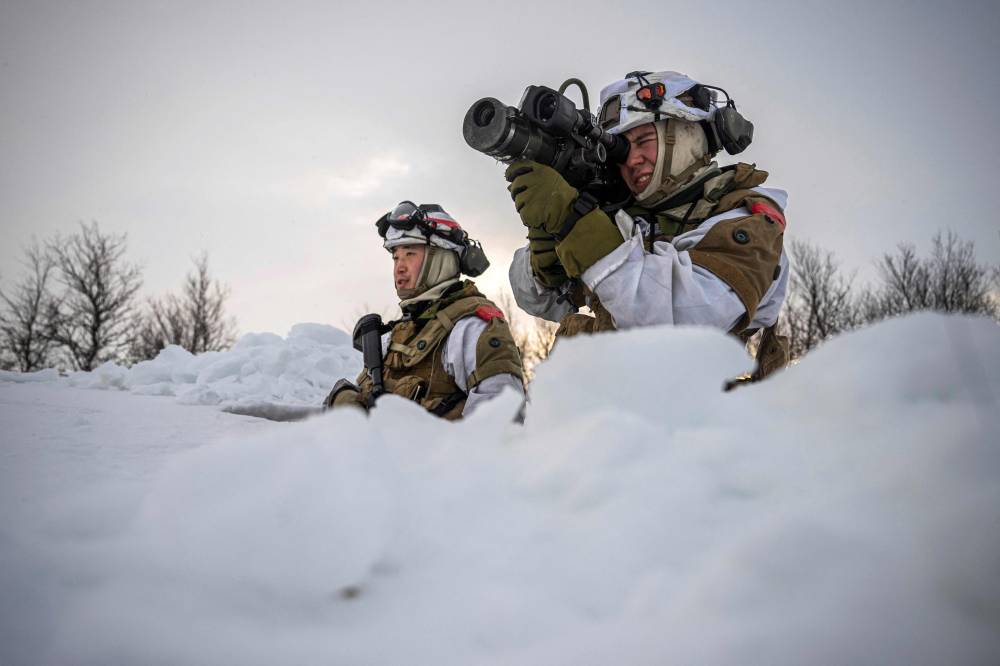
War mode
“Right now the Russian ground forces are bogged down in Ukraine, but Russia has stated high ambitions to reconstitute itself and adapt its force posture.”
As Russia has begun turning the tide on outgunned Ukrainian troops, there have been warnings that Moscow could one day turn its sights on a member of the alliance.
While the Kremlin’s forces are depleted after heavy losses in Ukraine, Russia has switched its economy to war mode.
Kyiv’s western allies meanwhile have struggled to ramp up production of crucial weaponry, and support for Ukraine is wavering.
Norway’s defense chief Eirik Kristoffersen said the number of Russian forces stationed near his country is currently just one fifth of the number before Moscow’s 2022 invasion of Ukraine.
“But on the maritime side, on the air side, and on the nuclear side, they’ve kept their forces intact in our region,” he told AFP.
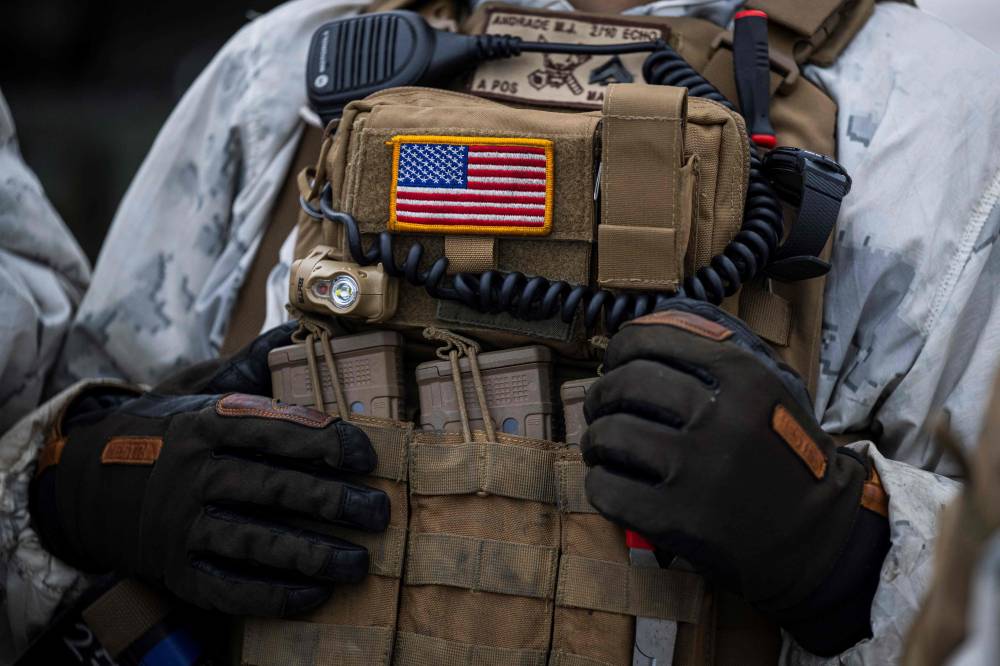
“You have this uncertainty about for how long they will continue to lose so much versus Ukraine and then how long will it take for them to rebuild their military.”
Arctic focus
One increasingly crucial area of competition with Russia is the harsh Arctic region where the exercise was staged.
Under President Vladimir Putin, Russia has ramped up its capabilities in the region where melting ice due to global warming looks set to open up vital shipping routes and resources.
Now with the membership of Sweden and Finland, seven of the eight Arctic countries are in Nato and the allies say they’re increasingly pushing to compete with Moscow in this vital region.
The Arctic is becoming hugely strategic and “that’s why Russia is investing here a lot, and China is also watching this area,” said Finland’s defense minister Antti Hakkanen.
“The Artic is a new focus area. We must invest in the capabilities to act here in the normal military fields but also in the intelligence side and other fields,” he added.
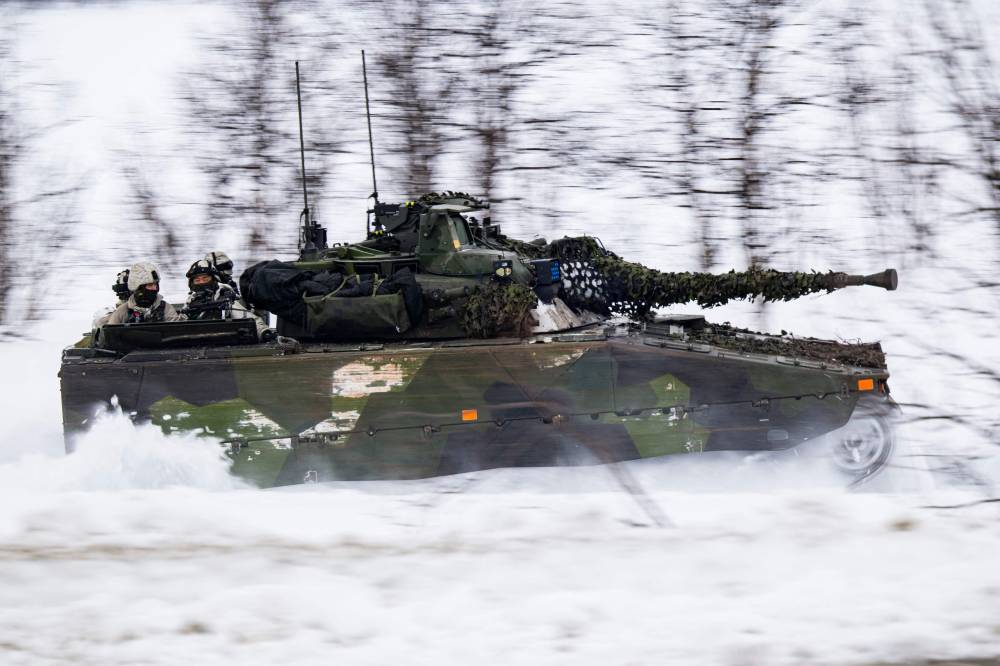
Rear Adm. David Patchell, deputy commander of the US Second Fleet, said a conservative estimate was that climate would open up resources worth $1 trillion in the region. At the same time, melting ice would mean the Artic would link oceans around the globe for navigation.
“We have to know how to work in the Arctic,” he told AFP.
“We’re playing catch-up but I would say we’re cognizant of Russia’s priority, and they are placing a significant priority on the Arctic.”
‘Big shock’
Testing troops and hardware from across Nato in punishing Arctic conditions is a key focus of these exercises with the alliance’s Nordic members sharing their expertise.
“It’s a very big shock to come into working conditions like this. We rarely see snow like this on a daily basis,” said US marine corporal Joshua Maddox, who deployed from the temperate climes of North Carolina in the southern United States.
“The biggest challenge is just the mental aspect—just being very prepared.”
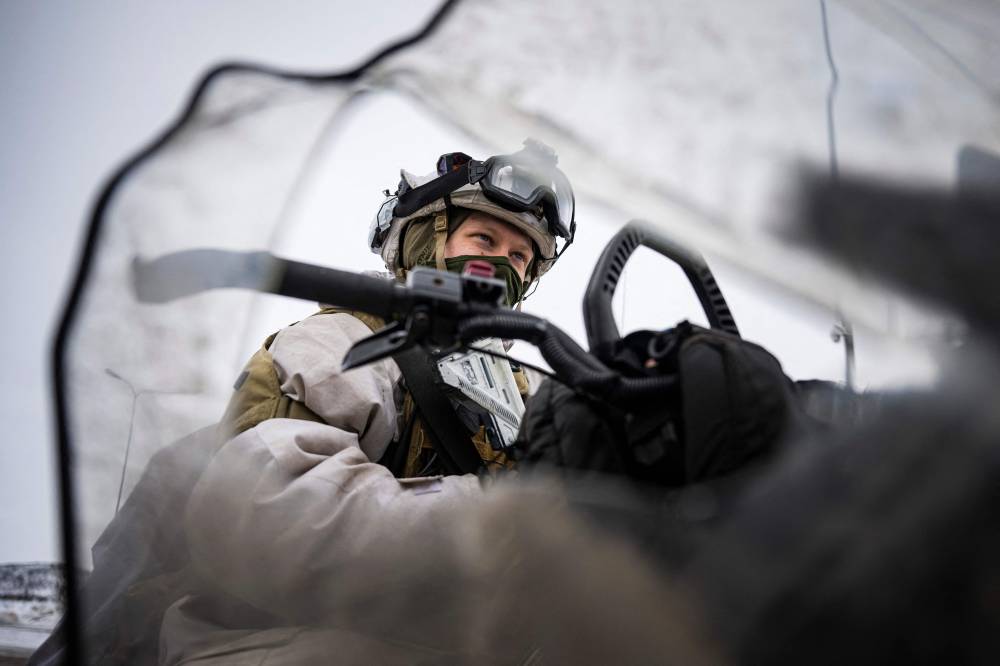
The Steadfast Defender drill—which involves warships sent from the US in a sign of Washington’s commitment—comes after Donald Trump rattled the foundations of the alliance.
The former president, the Republican challenger to Joe Biden in November elections, warned last month that he would encourage Russia to attack members not meeting financial commitments.
But soldiers and commanders on the ground insisted they remained focused on helping allies with any threat.
“If Putin decides to get ballsy and go off and do worse things than he’s doing right now, I’m going to be back out here fixing these for us, for other countries, helping them out,” said marine sergeant Joshua Perezchoa, standing next to a Himars missile launcher.
“The mission comes first.”
AFP is one of the world's three major news agencies, and the only European one. Its mission is to provide rapid, comprehensive, impartial and verified coverage of the news and issues that shape our daily lives.












